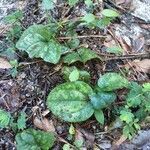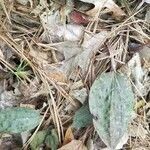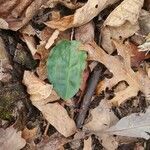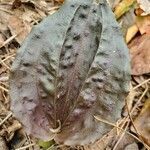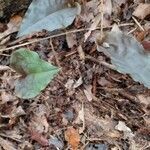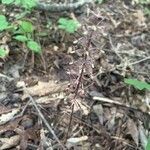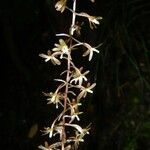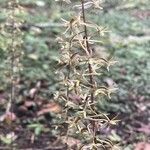Plants 10–65 cm. Corms 7–30 (–50) mm diam. Stems scapose, glabrous, basally 1–2-sheathed. Leaves persisting over winter; petioles 3–15 cm; blade purple abaxially, green or greenish purple adaxially, ovate, 5–10.5 × 2.5–7 cm. Inflorescences 8–28 cm; floral bracts 0.2 mm. Flowers green, pale greenish yellow, or greenish purple, (5–)10–55; sepals distinct and free, oblong-elliptic to oblanceolate, 5–8 × 1.5–2.8 mm; petals linear-oblong to oblong-elliptic to linear-oblanceolate, 4–7 × 1–1.8 mm; lip 5–8 × 2.5–3 mm, with 2 prominent basal lobes, spur 10–23 mm; column 2.5–4 mm. Capsules 9–12 × 4–5 mm.
An orchid.
